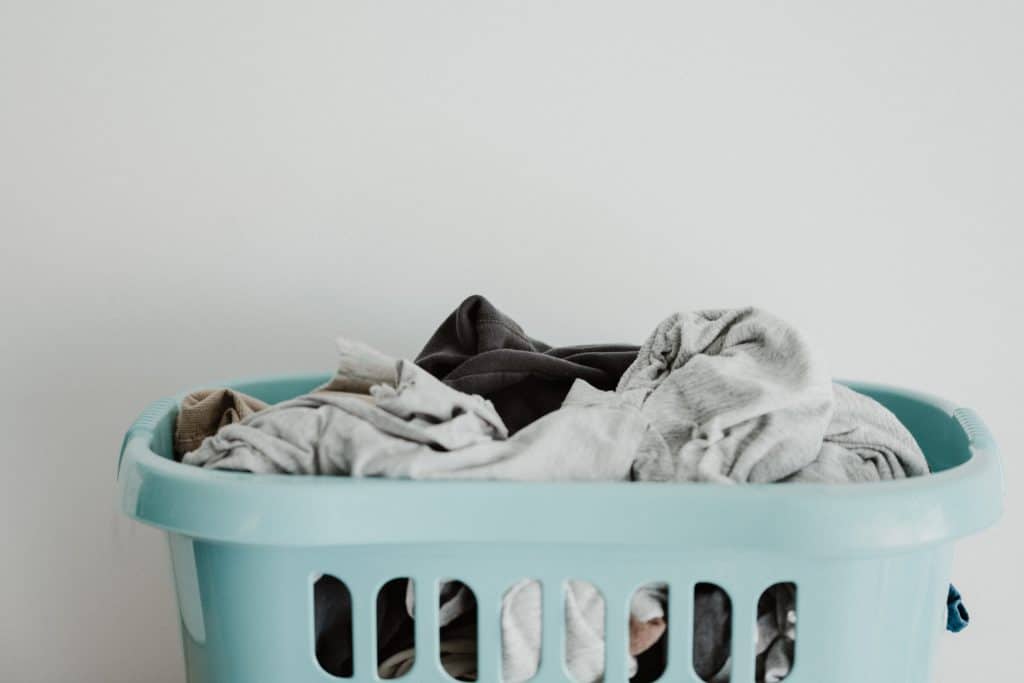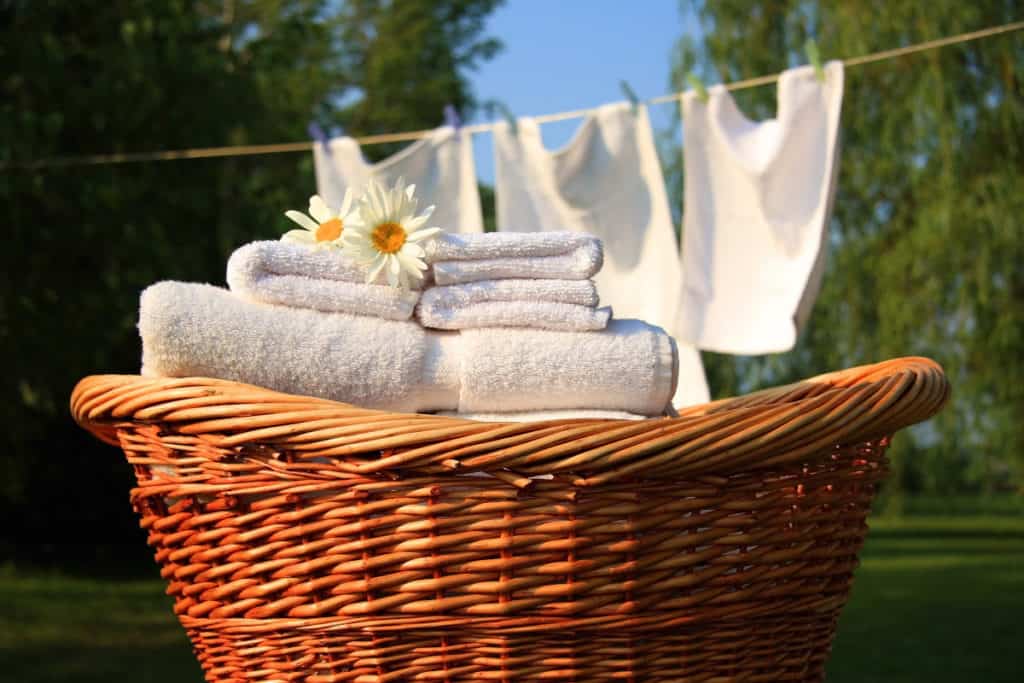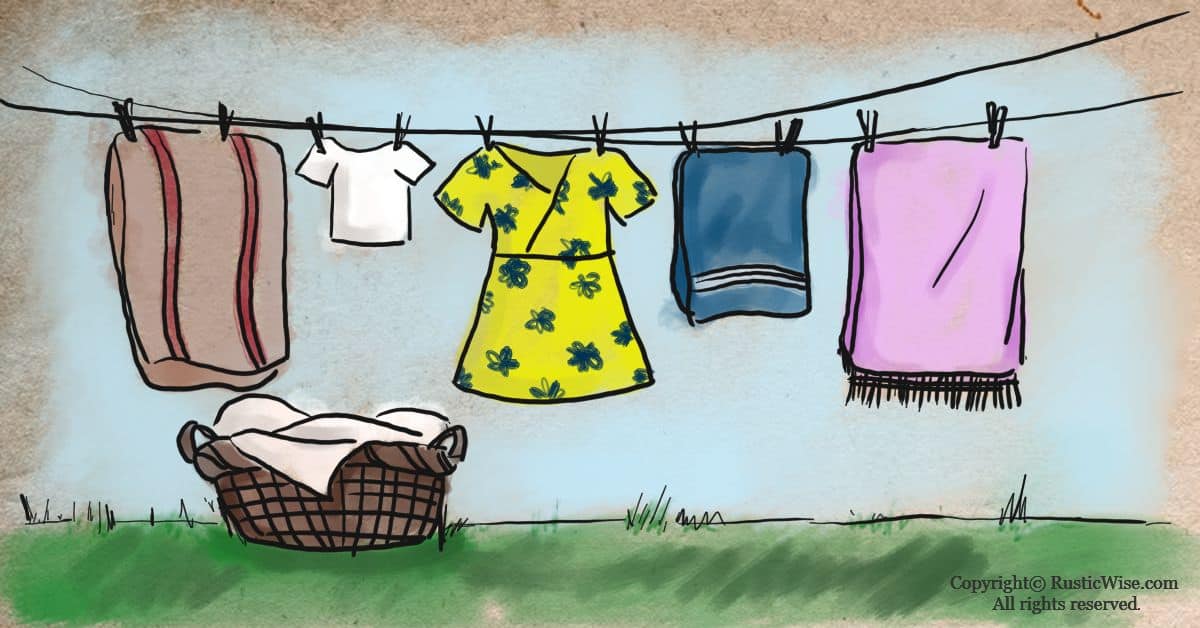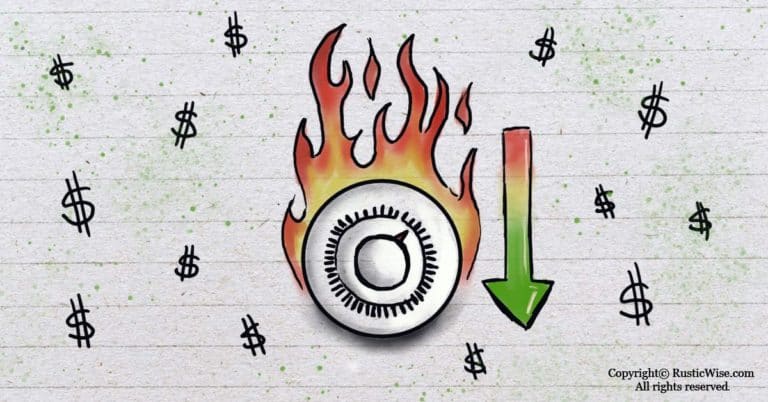How To Save Money on Laundry: 20 Easy Money-Saving Tips
Like washing dishes or sweeping the floor, doing laundry is a never-ending chore. If you count yourself in the camp that hates doing laundry, welcome to the club. While we can’t make doing laundry any less painful, we can make it less painful, budget-wise. We’ll show you how to save money on laundry with practical, everyday tips.
Considering the average American family does between 300-400 loads of laundry a year, this works out to roughly eight loads a week!
A significant portion of our time, energy, and money is dedicated to the art of washing. If we’re not careful or mindful with how we carry out this chore, it’s easy for the dollars to add up.
Read on to learn more about how to save money on laundry.
Is it cheaper to do laundry at home, or at a laundromat?
This is a good question. The answer depends largely on your personal situation including:
- How many loads of laundry do you do each week?
- Is there a laundromat within walking distance, or do you need to drive there?
- How much does it cost to install and buy a washer/dryer in your area?
- How much does it cost to do a load of laundry at your local laundromat?
Over at My Personal Finance Journey, they do a cost-comparison between doing laundry at home vs. a laundromat. The author was heavily leaning towards buying his own washer/dryer until he discovered the time it would require to break even from his investment would be greater than 10 years based on his current use of 1-2 loads of laundry each week.
Based on his conclusions, it’s cheaper to go to a laundromat if you only do one or two loads a week. Families, or households who do four or more loads would benefit from having their own washer/dryer.
Of course, if the convenience of having your own washer and dryer is very important, it may be worth it to invest in your own machines.

How to save money on laundry: washing machine tips
1) Use cold water
If you decide to make only one change to your laundry habits, switch to washing your laundry with cold water. And follow that cold wash with a cold rinse, while you’re at it.
A change in water temperature makes a world of difference. According to Energy Star, heating water for your washing machine eats up 90 percent of the energy required to operate the machine.
Mr. Electricity provides a handy chart detailing the approximate costs per load using hot, warm, or cold water:
Table: Price per load (electricity), based on water temperature
| Wash/Rinse Setting | Electrical Use (kWh/load) | Cost Per Load | Cost Per Year |
|---|---|---|---|
| Hot/warm | 4.5 kWh | $0.68 | $265 |
| Warm/warm | 3.5 kWh | $0.53 | $206 |
| Hot/cold | 2.8 kWh | $0.42 | $165 |
| Warm/cold | 1.9 kWh | $0.29 | $112 |
| Cold/cold | 0.3 kWh | $0.04 | $16 |
Source: Mr. Electricity
Based on this chart, switching from hot/warm to cold/cold saves you roughly $249/year on electricity alone.
This is the factor with the single biggest impact to your bottom line (and the environment too).
If you want an easy way to save money, just wash with cold water instead. And if you do your laundry in a laundromat, sometimes you pay less per load when running it through a cold wash. An added bonus is that cold water is gentler on your clothes than hot water.
If you’re worried that your laundry detergent doesn’t work well in cold water, don’t fret. Most liquid detergents are formulated to work in cold water too.
Tip: Only use hot or warm water for heavily soiled items, items that need to sanitization, and occasionally towels.
2) Crank the thermostat down on your water heater
For those times when you need to run a load of laundry using warm or hot water, you’ll reduce energy consumption when your thermostat is set lower. While most thermostats are set to 140 degrees Fahrenheit (60 degrees Celsius), the U.S. Department of Energy (DOE) recommends setting your thermostat to 120 degrees Fahrenheit (49 degrees Celsius).
Read more about how turning down your hot water heater can save you money.
3) Skip the fabric softener
Use white vinegar instead, which is better for your health and wallet. A 4L jug of fabric softener costs about $10, whereas a 4L jug of white vinegar costs only $2.
Besides being all-natural, the acetic acid in vinegar helps to:
- Soften and fluff up fabrics
- Brighten and whiten colors
- Prevent lint or pet hair buildup
- Reduce static
- Remove stains
- Remove odors
Check out some other laundry tips on using vinegar here.
4) Spin, baby, spin
The less wet your clothes are when you remove them from the washer, the less time they’ll need to spend in the dryer. If you have spin options on your washing machine, set it to either extended spin or high speed spin to help wring out any excess water.
5) Use less laundry detergent
Rather than just randomly pouring or dumping in laundry detergent, take the time to actually measure out the proper amount required. You may be surprised at how little you actually need. And if your load of laundry is barely dirty, you could probably skip the laundry detergent altogether.
6) Ditch the brand name detergents
While we may think that brand name laundry detergent works better than generic brands, this isn’t the case in most instances. Generic brands perform almost as well as brand name detergents for everyday washing needs.
7) Make your own laundry detergent
While making your own laundry detergent takes some time, you end up saving money over the long run. Over at The Simple Dollar, they made their own laundry detergent using baking soda, borax, bar soap, and water.
They conducted a “stain test” by smearing yellow mustard onto two white t-shirts. They washed one shirt using their homemade detergent, and the other using Tide. The cleaning results were almost identical.
The cost breakdown they provided with their homemade laundry solution made enough for 312 loads of laundry for a total cost of $6.97.
The homemade detergent works out to roughly just over $0.02 per load.
Compare this to an equal amount of store-bought Tide, which works out to roughly $0.20 per load.
8) Rewear clothing when possible
No, we’re not recommending that you rewear underwear, but that hoodie, or pair of jeans you only wore once (and didn’t get dirty) definitely fall under the rewear category. Many of us have gotten into a laundry routine and wash clothing more than necessary. Not only does this contribute to more loads of laundry and higher costs, it also wears out clothing more quickly.
Besides, imagine what you could do with all that extra time you save by doing less laundry.
9) Wait until you have a full load of laundry
It’s wasteful to run a load of laundry that’s only a quarter or half full. Waiting until you have a full load of laundry is just more efficient and energy-wise (for your machine and yourself!).
How to save money on laundry: dryer tips

10) Line dry when possible
While not everyone has the space to set up for a dedicated drying rack, air-drying is possible even in small apartments. You can take advantage of the space available in the bathtub, for example. Even if you remove a few items of clothing or a few towels from the dryer, this can reduce drying time.
11) Clean the lint trap regularly
Having a clogged lint trap reduces your dryer’s efficiency and also creates a fire hazard. Remove any dryer lint from the lint trap after each load to improve airflow and home safety.
12) Do multiple loads back-to-back to take advantage of the dryer’s heat
Once your dryer is already heated up, you can conserve energy by piggybacking on the heat already created by doing a consecutive second (or third) load.
13) Ditch the dryer sheets and consider dryer sheet alternatives
We’ve written about why we’re not fans of using dryer sheets for laundry. Not only are they laden with harmful chemicals and fragrances, they also do a number on your clothing and dryer over time.
Instead, consider using dryer sheet alternatives such as wool dryer balls. Wool dryer balls help reduce static, speed up drying times and can be reused for years. Other dryer sheet alternatives include crumpled tin foil balls, tennis balls, or any number of DIY dryer sheets.
14) Ensure the dryer vent is free of obstructions
One winter, it seemed our dryer was ready to kick the bucket. No matter how long I dried the clothes, the clothes were still wet. We were ready to order a new dryer when my husband decided to check out the dryer vent.
It was clogged with ice, snow, and other debris. Once the dryer vent was cleared, the dryer was back to its good ol’ self. When the dryer vent is blocked, moisture from the clothes becomes trapped in the dryer leading to longer and longer drying times.
15) When it comes to dryer hoses, the shorter, the better
You know that silver metal tube that’s located by your dryer? It only needs to reach your dryer, so consider truncating it. A shorter hose uses less energy to transfer moisture from the dryer to the dryer vent. This may speed up drying times by 20 percent.
16) Avoid over-drying clothes
Ever removed laundry from the dryer that’s burning hot? If your dryer has a moisture sensor, use it to prevent excess drying of laundry that needlessly wastes energy.
17) Avoid overstuffing the dryer
In order for a dryer to work at its peak efficiency, it needs room for air to circulate. When you stuff the dryer full of clothes, there’s no space for the warm air to flow. This leads to longer drying times.
18) Group similar items together to dry
Drying clothes is much quicker when you group similar-weighted items together in one load. So do a load with heavy towels, and do another drying load with lightweight fabrics.
How to save money on laundry in the long run
While the following tips require more money upfront, they’ll save you money in the long run.
19) Energy Star appliances
If you need a new washing machine, ENERGY STAR washers use 35 percent less water and 20 percent less energy than standard washers.
Need a new dryer? ENERGY STAR dryers use 20 percent less energy than conventional ones.
20) Front loading washers
While front loading washers cost more upfront than top loading ones, they use less water and energy in the long haul.
👉 If you like this post, see other Frugal Ideas To Save Money. 💰
Would you like more timeless tips via email?
Fun tips to help you live an independent, self-sustaining lifestyle. Opt-out at any time.


References
- Energy Star, Washer Facts & Figures, https://www.energystar.gov/products/clothes_washers. Accessed December 2020.
- Irwin, Jacob (12 July 2012). “Is it Cheaper to Use Coin Laundry or Install Your Own Washer and Dryer?,” My Personal Finance Journey. Accessed December 2020.
- Energy Star, Laundry Best Practices, https://www.energystar.gov/products/laundry_best_practices#:~:text=Water%20heating%20consumes%20about%2090,to%20operate%20a%20clothes%20washer. Accessed December 2020.
- Michael Bluejay (Mr. Electricity), How much does it cost to run a washing machine?, https://michaelbluejay.com/electricity/laundry.html. Accessed December 2020.
- Hamm, Trent, (12 April 2020). “Making Your Own Laundry Detergent: A Detailed Visual Guide,” The Simple Dollar. Accessed December 2020.
- Bob Vila, 7 Smart Ways to Cycle Through Laundry Faster, https://www.bobvila.com/articles/how-to-dry-clothes-fast/. Accessed December 2020.
- Energy Saver (U.S. Department of Energy), Laundry, https://www.energy.gov/energysaver/appliances-and-electronics/laundry#:~:text=Laundry%20Tips,load%20from%20lighter%2Dweight%20clothes. Accessed December 2020.

Author: Theresa Tesolin
Theresa is co-founder of RusticWise. She helps people unleash their inner DIY spirit by encouraging them to get dirty and make or grow something from scratch.









